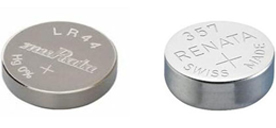The Brain of Modern Electronics: Integrated Circuits (ICs)
2023/5/17 10:07:32
Views:
Introduction:
In the fast-paced world of modern electronics, one term stands out as the driving force behind the technological advancements we witness today: Integrated Circuits (ICs). These tiny yet mighty semiconductor devices have become the brains of our electronic devices, enabling them to perform complex tasks with unparalleled efficiency and reliability. From smartphones and computers to medical equipment and automotive systems, ICs have revolutionized the way we live, work, and interact. In this article, we will delve into the world of Integrated Circuits (ICs), exploring their significance, functions, and impact on our everyday lives.
-
The Rise of Integrated Circuits (ICs):
Integrated Circuits (ICs) emerged as a groundbreaking technological innovation in the late 1950s and early 1960s. Prior to their development, electronic circuits consisted of discrete components like transistors, resistors, and capacitors, which required extensive wiring and occupied significant space. The invention of the IC by Jack Kilby at Texas Instruments and Robert Noyce at Fairchild Semiconductor revolutionized the field of electronics, allowing for the integration of thousands, millions, or even billions of electronic components onto a single chip.
-
The Anatomy of Integrated Circuits (ICs):
At its core, an Integrated Circuit (IC) is a marvel of miniaturization, housing a complex network of electronic components on a single semiconductor material, usually silicon. The manufacturing process involves intricate techniques like photolithography, where layers of materials are deposited and selectively etched to create transistors, diodes, resistors, and interconnecting metal traces on the chip. The combination of these components forms a highly integrated circuit that can perform a wide range of functions.
-
Types and Applications of Integrated Circuits (ICs):
Integrated Circuits (ICs) come in various types, each designed to serve specific purposes. Let's explore some common types and their applications:
a) Microprocessors: Microprocessors are the heart and soul of computers and other computing devices. These ICs integrate the functions of a central processing unit (CPU), memory, and input/output interfaces onto a single chip. Microprocessors power everything from personal computers and smartphones to advanced robotics and artificial intelligence systems.
b) Memory Chips: Memory ICs are responsible for storing and retrieving digital data. They come in different forms, such as Read-Only Memory (ROM), Random-Access Memory (RAM), and Flash memory. Memory chips are vital components in devices like computers, smartphones, digital cameras, and countless other electronic gadgets.
c) Operational Amplifiers (Op-Amps): Op-Amps are versatile ICs used for amplifying and processing analog signals. They find applications in audio amplifiers, signal conditioning circuits, and various sensor interfaces. Op-Amps provide high gain, accurate amplification, and excellent performance characteristics in a small package.
-
Advantages of Integrated Circuits (ICs):
The widespread adoption of Integrated Circuits (ICs) can be attributed to several advantages they offer:
a) Miniaturization: The ability to integrate thousands or even millions of components onto a single chip has led to the miniaturization of electronic devices. ICs have enabled the development of portable gadgets, wearable technology, and compact electronic systems, making electronics more accessible and convenient.
b) Increased Reliability: With fewer discrete components and interconnections, ICs offer improved reliability compared to traditional circuit designs. The reduced size and simplified construction reduce the chances of component failure due to physical stress or environmental factors. This enhanced reliability translates into devices that work flawlessly for extended periods.
c) Power Efficiency: Integrated Circuits (ICs) are designed to operate at lower voltages and consume less power compared to discrete circuitry.
-
Official websites of major brands:
Intel - https://www.intel.com/
Texas Instruments - https://www.ti.com/
Analog Devices - https://www.analog.com/
STMicroelectronics - https://www.st.com/
NXP Semiconductors - https://www.nxp.com/
Related Information
-
-
Phone
+86 135 3401 3447 -
Whatsapp





